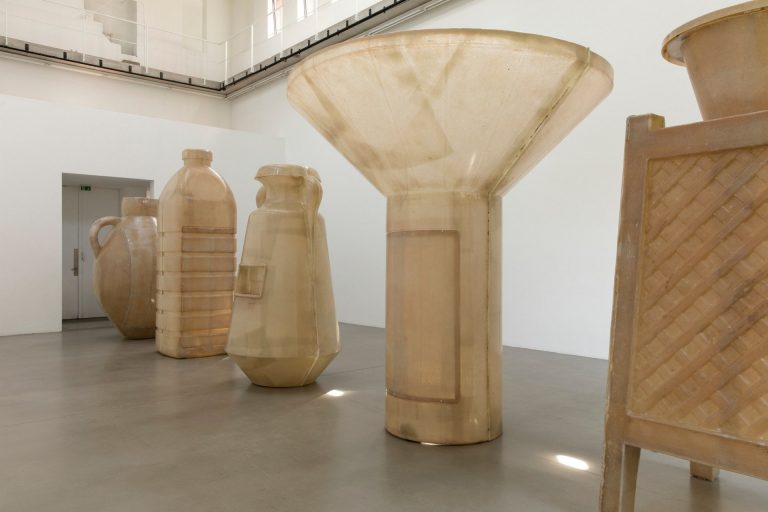We acknowledge the Traditional Owners of the land on which the Queensland Art Gallery | Gallery of Modern Art stands and recognise the creative contribution First Australians make to the art and culture of this country.

Alia Farid / Kuwait b.1985 / In Lieu of What Was 2019 / Fibre-reinforced polymer / Five pieces: 297 x 100 x 100cm; 280 x 260 x 260cm; 240 x 130 x 130cm; 255 x 123 x 123cm; 240 x 160 x 160cm / Photograph: Diana Pfammatter / Courtesy: Alia Farid and Portikus, Frankfurt / © Alia Farid
Alia FaridIn Lieu of What Was 2019
Not Currently on Display
The way in which social ideas are entwined within technological advancements is at the core of Alia Farid’s In Lieu of What Was. Cast in fibreglass and plastic, the installation takes the form of five oversized containers that reflect changes in the storage of water in West Asia. The individual objects include:
- a mushroom-shaped water tower designed in 1967–68 by architects Malene Bjørn and Sune Lindström for Kuwait’s Ministry of Public Works;
- the familiar plastic water bottle;
- a jarrah (copper pitcher);
- a heb (a clay pot lifted off the ground within a structure for cooling purposes);
- a zamzamiyah (earthenware container used for carrying holy water from the Zamzam well in Mecca, Saudi Arabia).
Operating as artistic readymades, these objects are unpainted sabil (public drinking fountains); small niches in the side of each sculpture are designed to house taps to access the water but are left empty in the gallery space.
The work speaks to the different ways people consume water, from respectfully carried sacred liquid to environmentally harmful disposable plastic containers. As people around the world face the rapid advancement of water scarcity, In Lieu of What Was asks what vessel (that is, what technology) will be next in line.
Alia Farid is known for her elegant and thought-provoking installations and videos that bring together art, architecture and anthropology. Her practice has often focused on spiritual and practical engagements with water. As climate change continues seemingly unabated, water has become an acute political topic particularly in West Asia. Kuwait has no rivers, yet its water consumption is among the highest in the world. The country is heavily reliant on the ultimately unsustainable practices of energy-intensive desalination plants and water importation. Through her artistic projects and curatorial work, Farid explores the way in which the country has approached large-scale water infrastructure as well as the symbolic role of water — physical cleanliness representing spiritual hygiene — within Islamic practice and architecture.